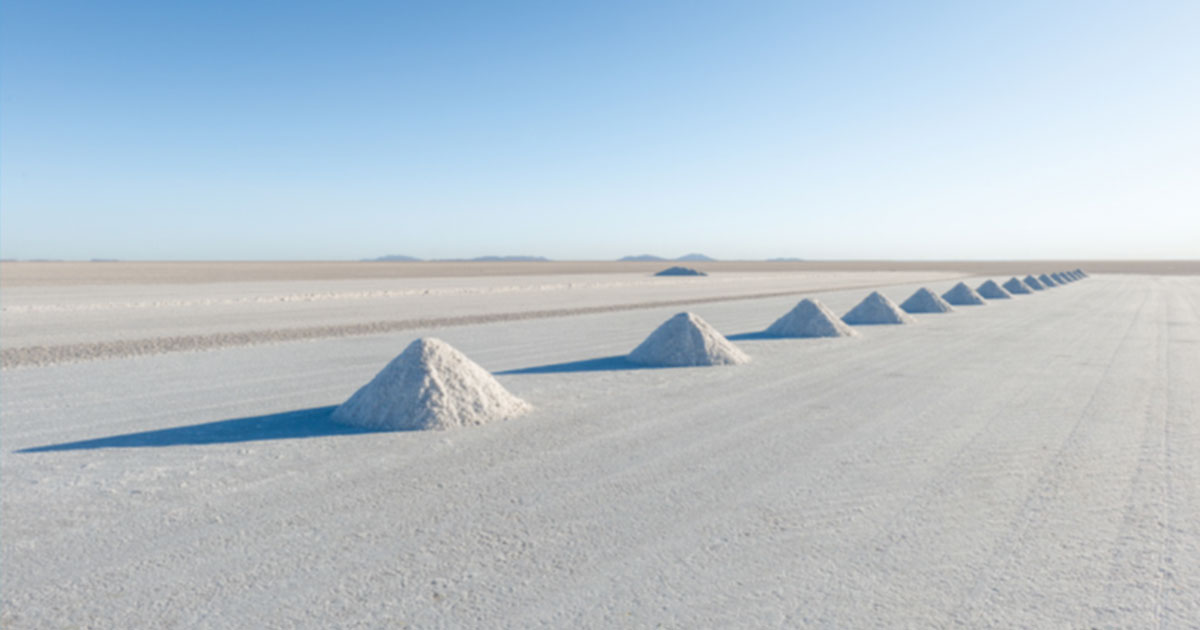

Indium, cobalt, dysprosium, praseodymium and ytterbium… Although these names may sound like ancient Roman cities, they are in fact some of the elements on which the development of renewable energies depend as they are essential components of wind turbines and solar panels, as well as different energy storage systems, in particular batteries.
When producing energy, these technologies do not emit greenhouse gases and their carbon footprint is a result of their manufacture, and to a lesser extent questions of maintenance and end-of-life. However, although they are promising in terms of combating climate change, other aspects are nonetheless problematic due to the use of critical metals or rare earths in their manufacture. The extraction and processing of these metals and rare earths - depending on the technology in question – can be a source of major environmental or social concerns. Examples include pollution caused by mining and/or processing, the deplorable working conditions of miners and the consequences of toxic waste on the health of local populations.
At this stage, a distinction should be made between “rare earths” and the so-called “conflict minerals” and “critical metals”. In fact, all of these categories come together in an ensemble of metals whose usage is driven by the development of technologies that are part and parcel of the energy transition.
Rare earths are a group of 17 metals: scandium, yttrium and the fifteen elements in the lanthanide family (lanthanum, cerium, praseodymium, neodymium, promethium, samarium, europium, gadolinium, terbium, dysprosium, holmium, erbium, thulium, ytterbium, lutetium). Lithium is extracted from salt mines like this one in Colchani (Bolivia). |
Let’s take some examples. In the production of renewable energies, rare earths (mainly dysprosium, neodymium, praseodymium and gadolinum) are only used in wind turbines equipped with permanent magnets (as opposed to electromagnets). According to the BRGM, (Bureau de Recherches Géologiques et Minières), these magnets represent 20% of the consumption of rare earths by weight and 50% by value. The associated issues are not so much related to their availability as to environmental concerns. As they are only present in low concentrations, a large amount of ore must be extracted and processed, which requires large quantities of water, energy and chemicals and can produce toxic waste in significant quantities.
But what about the photovoltaic and battery sectors? In fact, they require little or no rare earths and the nature of the challenges and the metals in question are not the same. For the former, the metals concerned are silicon, indium, silver, selenium and tellurium; and cobalt, lithium and graphite for the latter. Cobalt is particularly critical, because of the high geopolitical and social risks associated with its areas of supply (mainly in the Democratic Republic of Congo). As for lithium, its criticality is rather linked to economic questions, because 85% of lithium resources are located in Argentina, Chile and Bolivia and there are only a few market players.
The question of the water consumption necessary for its extraction in salt deserts is also a point worthy of attention. For the silicon used in photovoltaic panels, the main issue concerns the potential environmental impacts linked to its extraction and refining: significant water consumption, toxic discharges and a risk of water pollution if the process is poorly controlled.
How can we get past these difficulties? As far as photovoltaic panels are concerned, several improvements and innovations are providing solutions. For example, a reduction in the thickness of silicon wafers logically leads to a reduction in the amount of silicon required. Other improvements include doing away with aluminium frames, reusing materials and developing new photovoltaic cells based on perovskite (CH3NH3PbX3 type crystals), optionally in tandem with silicon, to improve yields.
As for batteries, new technologies are emerging such as solid electrolyte batteries in which the liquid electrolyte is replaced by a solid such as an oxide, a sulfide, or a polymer. Less polluting and less expensive to manufacture, they have a longer life and a higher energy density. Redox-flow batteries also offer high storage capacity, flexibility and a significant lifespan: enough to store intermittent renewable energy and minimize its environmental impact.
The development of recycling is also key to limiting the need for raw materials. Today, 98% of the mass of a wind turbine (foundations included) can be recycled, the remaining 2% corresponds to the blade resins and permanent magnets, for which recycling technologies are emerging. In the future, blades may also be made of recyclable carbon fibre. The volumes of waste are pushing the industry to structure recycling and notably develop permanent magnets without rare earths.
Solar panels are more than 95% recyclable and the metals in question are separated and redirected to other applications. However, while recycling systems are in place in Europe they are lacking in other regions of the world and must be developed if we are to limit the global pressure on resources and the environment.
From a regulatory point of view, it should be noted that laws are being introduced to require manufacturers to control environmental and social risks throughout their value chain: this is the case with the French Law on the Duty of Vigilance (2017), the Modern Slavery Act (2015) in the United Kingdom and the regulation on Ecological Civilisation in China.
These regulatory frameworks, combined with the development of new technologies and more efficient recycling, will make it possible to control and limit the potential environmental and social impact of renewable energies worldwide and ensure they are truly green energies!
L. Ligia da Silva Lima et al., Life cycle assessment of lithium-ion batteries and vanadium redox flow batteries-based renewable energy storage systems, Sustainable Energy Technologies and Assessments, in press, 2021.
R. Danino-Perraud, Face au défi des métaux critiques, une approche stratégique du recyclage s’impose, IFRI, 2018.
Les terres rares, an in-depth article by the BRGM
This article was writen by :
Anne Prieur Vernat - ENGIE Lab Crigen
Élodie Le Cadre - ENGIE Research